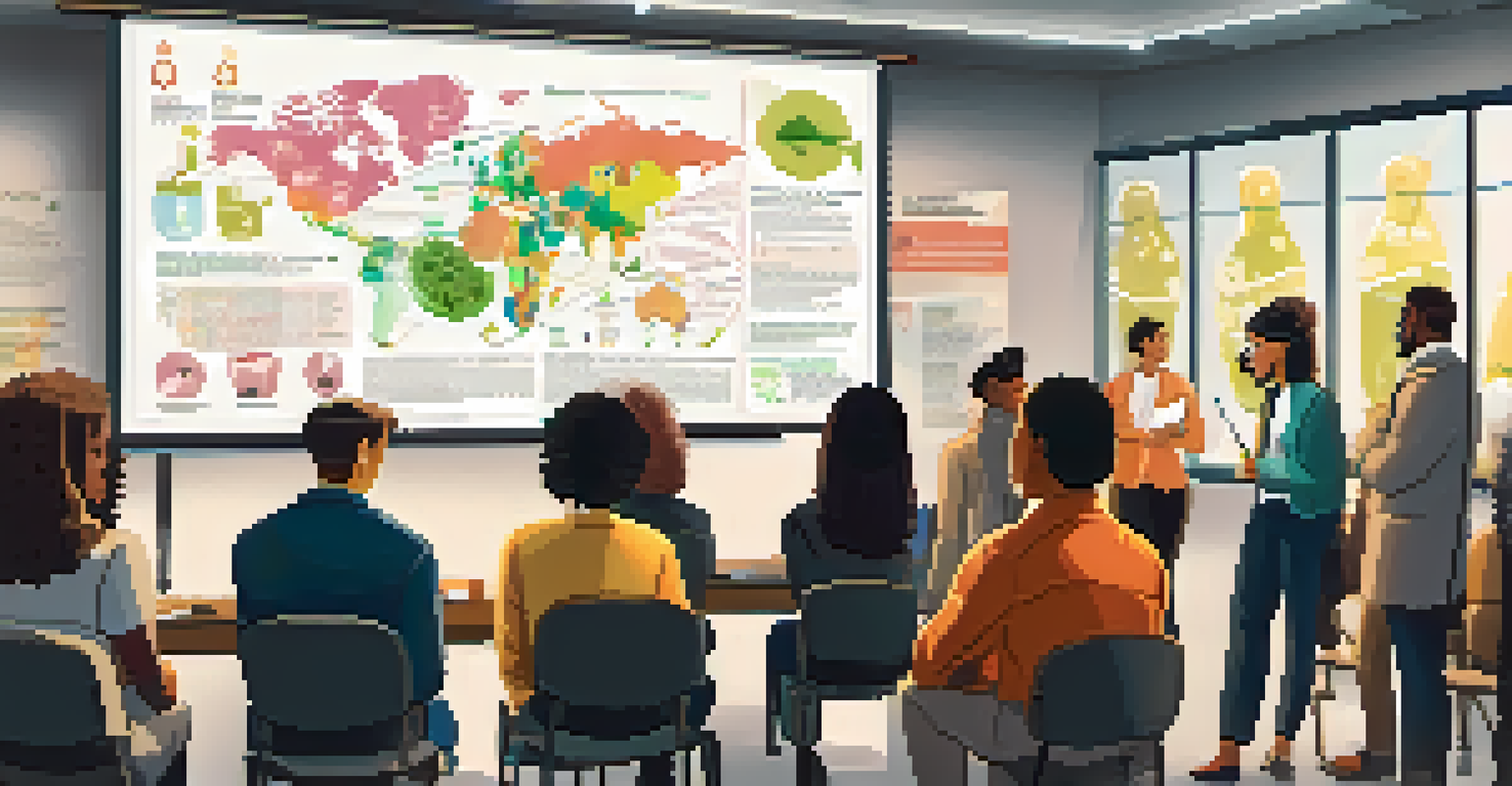The Effects of Environmental Toxins on Reproductive Health

What Are Environmental Toxins and Their Sources?
Environmental toxins refer to harmful substances present in our surroundings that can adversely affect human health. These include pollutants, chemicals from industrial processes, pesticides, and heavy metals. Common sources of these toxins can be found in air, water, soil, and even household products, making them pervasive in our daily lives.
The greatest threat to our planet is the belief that someone else will save it.
For instance, lead from old paint or plumbing can leach into drinking water, while chemicals like bisphenol A (BPA) are found in many plastics. Exposure to these substances can have various health implications, particularly for vulnerable populations such as pregnant women and developing fetuses. Understanding where these toxins come from is the first step in mitigating their effects.
By identifying these sources, individuals can make informed choices about their environment, such as opting for organic produce to reduce pesticide exposure or choosing glass containers over plastic. Awareness of environmental toxins is crucial for protecting reproductive health and overall well-being.
The Impact of Toxins on Male Reproductive Health
Men are not immune to the effects of environmental toxins, which can lead to significant reproductive health issues. Studies have shown that exposure to certain chemicals, like phthalates and heavy metals, can reduce sperm quality and count. This decline in reproductive capability can make conception more challenging for couples trying to conceive.

Additionally, environmental toxins can influence hormone levels, leading to conditions such as low testosterone. This hormonal imbalance can result in various health problems, including decreased libido and erectile dysfunction. By addressing these issues, men can seek medical advice and explore lifestyle changes that may help improve their reproductive health.
Environmental Toxins Impact Health
Environmental toxins from various sources can adversely affect both male and female reproductive health.
It’s essential to recognize that these effects are not just individual but can have broader implications for family planning and public health. Raising awareness about these risks can empower men to take proactive steps in safeguarding their reproductive health.
How Environmental Toxins Affect Female Reproductive Health
Women face unique challenges when it comes to reproductive health, and environmental toxins can exacerbate these challenges. Exposure to certain chemicals has been linked to irregular menstrual cycles, endometriosis, and fertility issues. These conditions can significantly impact a woman's ability to conceive and maintain a healthy pregnancy.
Health is a state of complete harmony of the body, mind, and spirit. When one is free from physical disabilities and mental distractions, the gates of the soul open.
Moreover, toxins can also affect pregnancy outcomes. For example, exposure to heavy metals and certain pesticides during pregnancy has been associated with low birth weights and developmental delays in children. This connection underscores the need for women to be vigilant about their environments, especially during critical reproductive years.
By understanding the risks associated with environmental toxins, women can take proactive measures to reduce their exposure. This might include choosing natural beauty products, eating organic foods, and advocating for policies that promote cleaner environments.
The Role of Endocrine Disruptors in Reproductive Health
Endocrine disruptors are a specific class of environmental toxins that interfere with hormone functioning in the body. These substances can mimic or block hormones, leading to a range of reproductive health issues for both men and women. Common endocrine disruptors include BPA, dioxins, and certain pesticides.
Exposure to these disruptors can result in problems such as infertility, early onset of puberty, and even certain cancers. For instance, studies indicate that women exposed to high levels of endocrine disruptors may experience earlier menopause, impacting their reproductive timeline. Understanding these risks is vital for making informed lifestyle choices.
Endocrine Disruptors Affect Hormones
Endocrine disruptors can interfere with hormone functioning, leading to fertility issues and other reproductive health problems.
To mitigate the effects of endocrine disruptors, individuals can focus on minimizing exposure through conscious consumer choices and advocating for stricter regulations on harmful chemicals. Simple steps, like using glass or stainless-steel containers instead of plastic, can make a significant difference.
The Effects of Air Pollution on Reproductive Outcomes
Air pollution is another environmental hazard that poses serious risks to reproductive health. Studies have shown that exposure to high levels of air pollutants, such as particulate matter and nitrogen dioxide, can lead to adverse pregnancy outcomes. This includes complications like preterm birth and low birth weight.
Moreover, air pollution can also affect fertility in both men and women. Research suggests that men exposed to polluted air may experience lower sperm quality, while women may face challenges in conceiving. The cumulative effects of air pollution can thus hinder family planning efforts and overall reproductive health.
Addressing air pollution requires collective efforts at community and policy levels. Individuals can also contribute by advocating for cleaner air initiatives and reducing their carbon footprint through sustainable practices, like using public transportation or biking.
Strategies to Minimize Exposure to Environmental Toxins
While the presence of environmental toxins can be alarming, there are practical strategies individuals can adopt to minimize exposure. First, becoming informed about the products we use—ranging from cleaning supplies to personal care products—can help us choose safer alternatives. Opting for eco-friendly and non-toxic brands is a great start.
In addition, maintaining a healthy diet rich in organic fruits and vegetables can reduce pesticide exposure. Washing produce thoroughly and avoiding processed foods can further contribute to a cleaner diet. Staying well-hydrated with filtered water can also help minimize the intake of harmful chemicals.
Air Pollution Threatens Reproductive Health
Air pollution is linked to adverse pregnancy outcomes and can negatively affect fertility in both men and women.
Lastly, it’s important to stay updated on local environmental issues and advocate for policies that promote a cleaner environment. Engaging in community actions or supporting organizations that focus on environmental health can amplify individual efforts.
The Importance of Public Awareness and Education
Raising public awareness about the effects of environmental toxins on reproductive health is crucial for fostering a healthier society. Education can empower individuals to make informed choices that protect their health and the health of future generations. Schools, healthcare providers, and community organizations can play a vital role in disseminating this information.
Workshops, seminars, and informational campaigns can help spread knowledge about the sources and effects of environmental toxins. By sharing personal stories and scientific research, communities can build a collective understanding of the importance of reducing exposure to these harmful substances.

Public engagement can lead to significant changes, prompting policymakers to implement stricter regulations on harmful chemicals. With informed communities, we can work towards a healthier future, ensuring that reproductive health remains a priority for all.